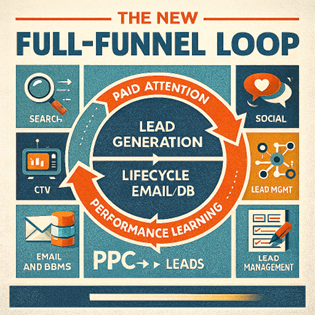As social media advertising continues to evolve, one trend has risen above the rest: the dominance of video content. From quick story ads on Instagram to in-depth, explainer-style ads on Facebook, video has become a cornerstone of successful paid social advertising strategies. But what makes video so impactful, and why should advertisers prioritize it over static image ads? We’ll explore the rise of video in paid social advertising, key performance metrics, and why video outperforms static ads in almost every way.
The Rise of Video in Paid Social Advertising
The shift towards video in digital marketing has been dramatic over the past few years. Social platforms like Facebook, Instagram, and TikTok have all integrated video-centric features that encourage brands to produce more visual, dynamic content. According to a recent study, over 80% of all internet traffic in 2023 was video, and that number is only expected to rise in the coming years. Social media platforms have taken note, with Facebook reporting that video posts have an engagement rate 59% higher than other types of posts.
Why Video Outperforms Static Ads
- Engagement and Retention
Video is naturally more engaging than static images. People can absorb more information in a short amount of time through moving visuals and audio. Studies have shown that viewers retain 95% of a message when they watch it in a video, compared to just 10% when reading it in text. This higher retention makes video ads an incredibly effective tool for brand recall and product awareness. - Improved Click-Through Rates (CTR)
Across all social platforms, video ads have consistently outperformed static ads in terms of click-through rates. For example, Facebook video ads average a CTR of 1.84%, whereas image ads typically sit around 0.70%. This makes video almost three times more effective in driving potential customers to your landing page, increasing conversions. - Increased Conversion Rates
The improved engagement and higher click-through rates of video content naturally led to increased conversion rates. Research from Wyzowl shows that 84% of consumers have been convinced to buy a product after watching a brand’s video, and 93% of marketers say that video has helped increase user understanding of their product or service. Video ads are particularly effective for explaining complex products or services, creating a more informed and confident buyer. - Mobile Optimization and Shareability
As more users consume content on mobile devices, video ads have proven to be a mobile-friendly format. People are more likely to watch and engage with videos on their phones than scroll past static images. Furthermore, social videos are shared 1200% more than text and image content combined, allowing brands to benefit from organic reach and virality in ways that static ads simply can’t match.
Metrics to Watch When Running Video Ads
To gauge the success of your video ads, keep an eye on the following key performance indicators (KPIs):
- View Count: The most basic metric, but a critical one, as it shows how many people started watching your video.
- Watch Time: Measures how much of your video people are actually watching. The longer they stick around, the more engaging your content is.
- Engagement Rate: Likes, comments, and shares are important indicators of how your audience is interacting with your ad.
- Click-Through Rate (CTR): The percentage of viewers who clicked on your call-to-action (CTA) after watching the video.
- Cost Per View (CPV): This helps measure the efficiency of your ad spend. It’s a helpful metric for budget management and optimizing future campaigns.
- Conversion Rate: Measures the percentage of users who complete a desired action (e.g., making a purchase or signing up for a newsletter) after watching your video.
Video Ad Success vs. Static Ads: The Numbers Speak
Numerous studies highlight the effectiveness of video in paid social advertising, but perhaps the most compelling evidence lies in the data itself. Here’s a comparison of video ads vs. static image ads across various platforms:
- Facebook: Video ads see 1.5 to 2 times higher engagement rates compared to static image ads, with a 20-30% increase in conversion rates for video over static formats.
- Instagram: Videos generate more than twice the engagement compared to static ads in Stories. Carousel video ads also outperform image carousels, driving a higher CTR.
- LinkedIn: Video ads get 30% more comments and engagements than static ads on LinkedIn, making them ideal for B2B marketing and lead generation.
The Future of Video in Paid Social
As we move into 2025, it’s clear that video will continue to dominate the digital advertising landscape. Platforms like TikTok, Instagram Reels and YouTube Shorts, which are built entirely around short-form video content, have set the stage for how consumers will engage with ads moving forward. Meanwhile, traditional social platforms like Facebook and Instagram are prioritizing Reels and video-based formats more than ever. Brands that fail to adopt a video-first approach in their paid social advertising strategy risk being left behind.
Conclusion
Video has proven itself to be more engaging, shareable, and successful than static ads across every major social platform. By leveraging video in your paid social advertising, you can achieve better engagement, drive higher conversion rates, and create lasting connections with your audience. As social platforms continue to prioritize video content, integrating video ads into your strategy isn’t just an option—it’s essential for success in 2025 and beyond.
We at Weboganic recommend that by focusing on video, you can stay ahead of the curve, ensuring your brand stands out in an increasingly competitive digital landscape.



